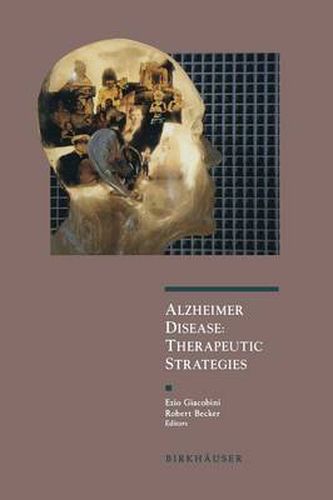Readings Newsletter
Become a Readings Member to make your shopping experience even easier.
Sign in or sign up for free!
You’re not far away from qualifying for FREE standard shipping within Australia
You’ve qualified for FREE standard shipping within Australia
The cart is loading…






This title is printed to order. This book may have been self-published. If so, we cannot guarantee the quality of the content. In the main most books will have gone through the editing process however some may not. We therefore suggest that you be aware of this before ordering this book. If in doubt check either the author or publisher’s details as we are unable to accept any returns unless they are faulty. Please contact us if you have any questions.
Since the apoE4 allele is a risk factor or susceptibility gene in late-onset familial and sporadic AD, the mechanism of disease expression may involve metabolic effects that are isoform specific. Isoform-specific interactions of apoE therefore become critical in the mechanism of AD pathogenesis. Detailed characterization of the binding of the apoE isoforms with proteins and peptides relevant to the pathology of the disease may be critical in understanding disease pathogenesis. These critical isoform-specific interactions of apoE may involve interactions with proteins and pep tides in the defining neuropathologic lesions of the disease, the neurofibrillary tangle and senile plaque. Other possible critical isoform-specific interactions include the mechanism of internalization, intracellular trafficking, and subsequent metabolism. In addition, differential post-translational modifications of apoE isoforms may determine differences in metabolism contributing to the pathogenesis of the disease. Oxidation of apoE may confer several isoform-specific, biochemically distinct properties. Since {3A peptide binds apoE in the lipoprotein binding domain of the protein and not in the receptor-binding domain, apoE could target bound {3A4 peptide to neurons via the LRP receptor. Internalization of the apoEI {3A peptide complex into the cell, by the same route as the apoE-containing lipoproteins, would result in incorporation into primary lysosomes and pH dependent dissociation. The demonstration of apoE in the cytoplasm of neurons, with isoform-specific interactions of apoE with the microtubule-binding protein tau demonstrated in vitro, suggest additional, testable hypotheses of disease pathogenesis.
$9.00 standard shipping within Australia
FREE standard shipping within Australia for orders over $100.00
Express & International shipping calculated at checkout
This title is printed to order. This book may have been self-published. If so, we cannot guarantee the quality of the content. In the main most books will have gone through the editing process however some may not. We therefore suggest that you be aware of this before ordering this book. If in doubt check either the author or publisher’s details as we are unable to accept any returns unless they are faulty. Please contact us if you have any questions.
Since the apoE4 allele is a risk factor or susceptibility gene in late-onset familial and sporadic AD, the mechanism of disease expression may involve metabolic effects that are isoform specific. Isoform-specific interactions of apoE therefore become critical in the mechanism of AD pathogenesis. Detailed characterization of the binding of the apoE isoforms with proteins and peptides relevant to the pathology of the disease may be critical in understanding disease pathogenesis. These critical isoform-specific interactions of apoE may involve interactions with proteins and pep tides in the defining neuropathologic lesions of the disease, the neurofibrillary tangle and senile plaque. Other possible critical isoform-specific interactions include the mechanism of internalization, intracellular trafficking, and subsequent metabolism. In addition, differential post-translational modifications of apoE isoforms may determine differences in metabolism contributing to the pathogenesis of the disease. Oxidation of apoE may confer several isoform-specific, biochemically distinct properties. Since {3A peptide binds apoE in the lipoprotein binding domain of the protein and not in the receptor-binding domain, apoE could target bound {3A4 peptide to neurons via the LRP receptor. Internalization of the apoEI {3A peptide complex into the cell, by the same route as the apoE-containing lipoproteins, would result in incorporation into primary lysosomes and pH dependent dissociation. The demonstration of apoE in the cytoplasm of neurons, with isoform-specific interactions of apoE with the microtubule-binding protein tau demonstrated in vitro, suggest additional, testable hypotheses of disease pathogenesis.